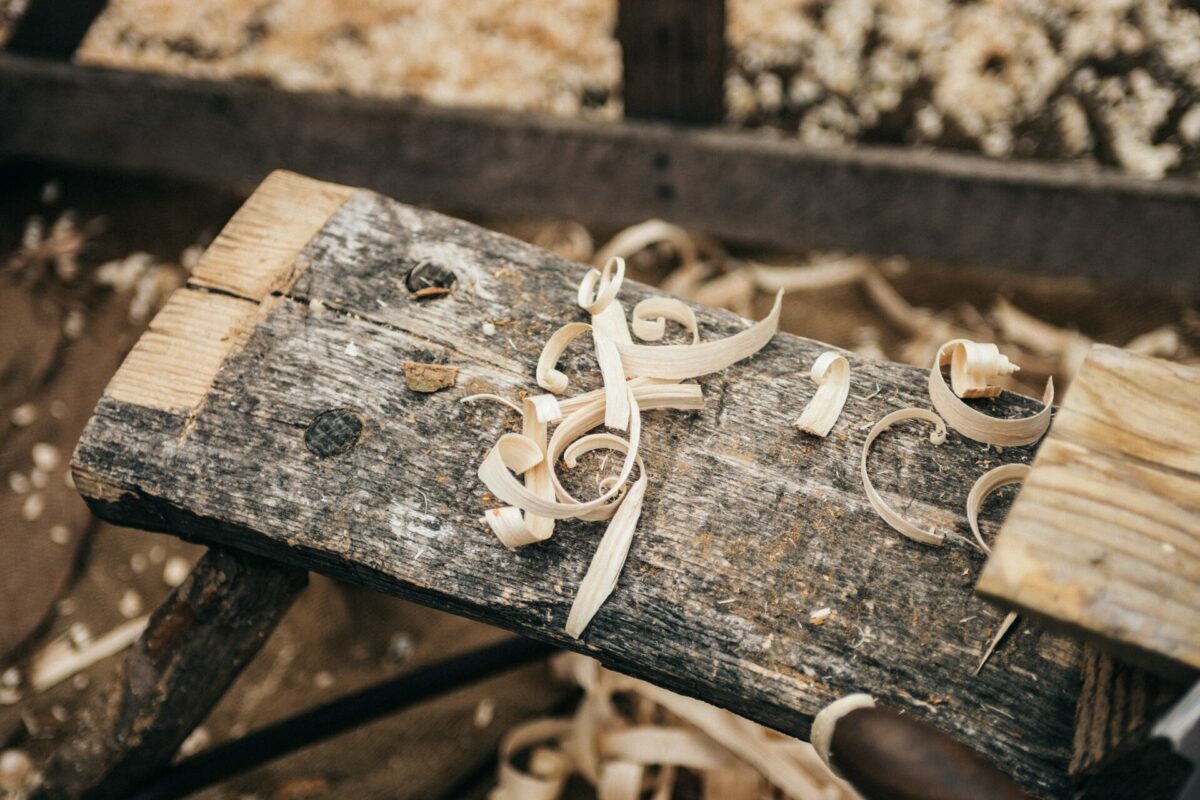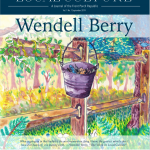“When we build, let us think that we build for ever.”
– John Ruskin
Wauwatosa, WI. The above quote from John Ruskin is one of the slogans for Mortise & Tenon Magazine, a publication that Front Porch Republic readers would do well to read. The quote from Ruskin captures a mindset of durability and multi-generational commitments shared by FPR. This magazine was started in 2015 by Joshua Klein and Mike Updegraff in order to “cultivate reverence for the dignity of humanity and the natural world through the celebration of handcraft.” Beyond writing about craftmanship and antique furniture, M&T explores ideas about human work in a technological age, work in the context of community, and the relationship between craft and tradition. Regardless of your interest in the nuances of woodworking, many Porchers would find reading M&T to be worthwhile.
The hobby of woodworking experienced significant growth during the COVID pandemic, and my own interest and skill grew during that time as well. As a physician going through my residency training in internal medicine during the pandemic, I was not forced to stay at home from work, a reason that led many others to try their hand at working with wood. Nonetheless, less to do outside the home and more stress at work meant more time escaping to the workshop to work on small projects for my home and growing family. Further, I used some of our stimulus money to add fundamental tools to my workshop.
The more I dove into the nearly infinite online resources available to budding woodworkers, the more I was struck by a tension between the simplicity and solidity of craftmanship on the one hand, and the noisy shop machines and complicated jigs in many instructional videos on the other. I did own a few power tools from earlier home projects, but owning anything large or deafening was out of the question for me, with a small basement workshop and two young children.
There seems to be a vast difference between the DIY-ism of the sort that is pushed by Blue Big Box and Orange Big Box stores, and the true craftmanship that is based on a cunning mind and adept hands. I do admit that on occasion I buy hardware, tools, or lumber from these places for projects. But many of the more complicated labor-saving jigs and power tools turn out to “devalue or replace the skills of those who use them,” as Wendell Berry warns in The Unsettling of America. While I continue to rely on my table saw for preparing stock for projects, and I use a hand router to cut some types of joinery, I am mindful of the skills, physical activity, and wisdom that I am forfeiting when I use these loud machines to save time and effort.
Over the last year, I have encountered several articles that Joshua Klein contributed to Fine Woodworking Magazine. His confidence in the ability of hand tools to achieve great results on their own, his emphasis on making furniture pieces that will last generations, and the photos of his idyllic and sylvan Maine woodshop led me to look into his work. That is how I came to the wellspring of wisdom and craftmanship that is Mortise & Tenon Magazine.
As a magazine, M&T is interested in thinking about work by examining methods and examples of handicraft. Porchers should read M&T for (at least) three main reasons. First, they will find many of the intellectual influences familiar, and they will find themselves at home thinking about how local culture manifests in physical things built by our neighbors. Second, an inherent skepticism regarding the claims of technological progress, industrialization, and digitalization dovetails (pun intended) with the FPR mission of place, limits, and liberty. Finally, a beautiful and sturdy publication results in a sensory and pleasant reading experience that is unique in the digital age. I will explore these three aspects in turn.
One of the primary focuses of M&T’s research and writing is antique furniture. They examine pieces in detail in order to understand the craftsman’s approach and to put this in the context of a broader tradition. By examining artifacts from multiple regions, this pursuit also achieves the effect of showing how local culture and place influence both the methods and products of craft in that region. This is a necessary antidote to a world in which many of the mass-produced “wood” products that our consumerist public encounters are lifeless and without trace of either a tree or a human’s touch.
Drawing on the work of Wendell Berry, E.F. Schumacher, and Ivan Illich, among others, M&T seeks to counteract this mass-produced monoculture by celebrating craft. They agree with Berry’s reminder in “Conservation and the Local Economy” that “we must keep alive in every place the human knowledge of the nature of that place.” Rebuilding the skills of our hands, and learning those skills from local masters, is one way to do this. This goes against the grain (pun again intended) of an economy that tells us, in the words of Ivan Illich, that our goal should be “increased satisfaction, with less input of human energy and with more division of competence.”
Finally, the product itself is beautiful and engaging. With more and more publications moving to digital only, there is a distinct pleasure in receiving a hefty, paper-wrapped parcel in the mail. Up until recently the issues were packaged by the editors and their family and friends at “packing parties.” The photography and print are high quality and make for a delightful reading experience.
In addition to writing about all these questions and bringing light to the importance of craftmanship, M&T has additional programming to help support their mission of cultivating reverence for human dignity and the natural world. For instance, they offer an 8-week apprenticeship program to help budding woodworkers “develop discipline, competence, and skill.” The apprenticeship also involves reading and writing about the topics mentioned above. To support scholarly work about local or traditional craft work, they also offer research grants. These programs offer opportunities to engage with our hands as well as with the personal and material communities around us.
Handmade goods are too often seen as beautiful but unnecessary or impractical given the abundance of less-expensive, mass-produced goods. In Tools for Conviviality, Illich states that people in our consumerist society “value handicraft and personal care as luxuries, but the ideal of a more labor-intensive, yet modern, production process seems to them quixotic and anachronistic.”) Mortise & Tenon seeks to alter this perception by bringing handmade goods back down from a “luxury” to an everyday part of our lives. In the process, they help us imagine how we can all learn a craft and gain the competence needed to pursue a more convivial life.





1 comment
Aaron
Nice writeup, Will. I’ve thought about subscribing. I’m not a hand tool purist, as I’ve gotten pretty into rebuilding old machinery, but it’s still a good day, when all I’ve got to do is a bunch of handplaning.
I’ve let my FWW subscription drop. Maybe when inflation reaches less than 5 percent a minute, I’ll have the rhinos to subscribe to this one, instead.
Aaron
Comments are closed.